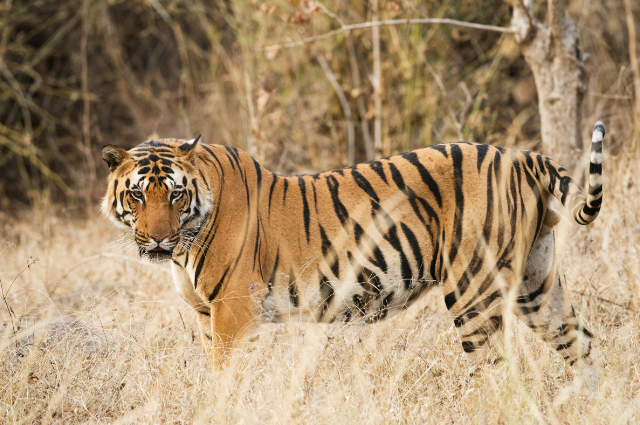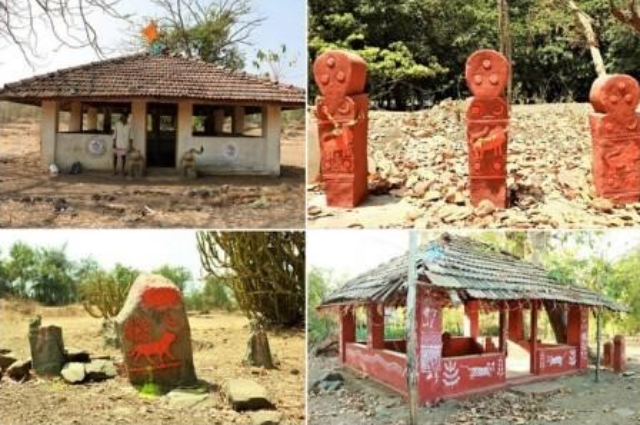
Photo by Vincent van Zalinge on Unsplash
Human-wildlife conflict emerged in the 1990s, focusing on ecology, diet, geography, attack distribution, and mitigation practices in protected areas. Their interactions are a widely studied subject in conservation literature, but they are not new to societies worldwide who have long histories of cohabiting with wildlife. They attempt to understand and manage the consequences of these interactions.
The Warlis, an Indigenous community in North-western Maharashtra, have long shared spaces with big cats, including leopards and tigers. They worship a deity called "Waghoba" and engage in oral histories, narratives of worship, power structures, and belief systems. This study explores the multilayered and interrelated features of Waghoba worship and people-leopard relationships, including religion, politics, and kinship. The study acknowledges the heterogeneity in indigenous cosmologies and the need to decolonize our perspective to recognize the existence of various cosmologies. The Warli community historically lived in Mumbai Suburban, Thane, and Palghar districts, with both Warlis and big cats present in the study area.
This short-term ethnography study focuses on understanding and interpreting cultural systems in Waghoba shrines. RN and OP conducted fieldwork for 6 months, building trust and social connections. They documented Waghoba shrines, conducted interviews, and observed participants. Informed consent was obtained from participants before conducting interviews. The study's ethics approval was obtained from the Human Research Ethics Committee at WCS-India. The study involved four researchers and two local field assistants conducting interviews in either Marathi or the Warli language. The researchers were primarily male-dominated, with only one woman and three men. The majority of participants were middle-aged and elderly men, with some women redirected to men within the household or village. The interviews were recorded using a handheld audio recorder after gaining informed consent, and names and identifiers were omitted to safeguard participant anonymity. The interviews varied in duration between 10 and 55 minutes. The audio recordings were translated into English and transcribed by multiple people, then checked by RN for accuracy.
The study mapped GPS locations of shrines using QGIS software, and textual data was analyzed inductively using a grounded theory method. Data was coded, developed, and integrated, and analytic narratives were written. NVivo software was used to code the data manually, and themes emerged from interviews, origin stories, and encounters with big cats. The study focused on the history of Waghoba worship, rituals, traditions, people's perception of the big cat, negotiation of shared spaces, and social dimensions of the worship.

Image by Usha Manne
Waghoba, a big cat deity worshiped by multiple communities, is derived from the Marathi words "wagh" meaning big cats and "ba," a term assigned to an elderly or paternal figure in the community. The people in this landscape perceive leopards and tigers as forms of Waghoba, with the word wagh similar to the Hindi word "bagh'' used to refer to both the tiger and the leopard in other parts of India. Waghoba's iconography consists of a female under the sun and moon, carved on stone or wood slabs covered with a bright vermillion paste. Many villages have Waghoba shrines built at the entrance to the village, suggesting that Waghoba might be considered a gatekeeper, protecting the entire village. The age of the shrines in their respective villages is at least a few hundred years old, and wooden idols that decay are replaced every 15-20 years. Waghoba exists within an interconnected network of deities worshiped by the community. In many Warli villages, Waghoba is worshiped as the chief village deity or gaondevi, worshiped for protection from big cats, disease, and calamities. People trust Waghoba when roaming in the forests, believing he is their protector. Waghoba is known to initiate important life and social events, such as weddings, naming a child, and building new homes, only after receiving blessings from him.
The study explores the historical interactions between the Warli and big cats, focusing on their coexistence and conflicts. The Waghoba institution, a long-standing relationship, has been involved in understanding human-wildlife interactions and the consequences of sharing space with dangerous predators. The festival of Vagh Baras exemplifies the presence of systems arising from these engagements. The study aims to diversify our understanding of human-wildlife interactions by revealing how local institutions contribute to co-existence and negotiate conflicts. Locally produced systems that address human-wildlife interactions may exist in other cultures and landscapes. Conservation interventions should consider the localized specificities and histories of landscapes, as they may require their own intervention model. The study highlights the importance of considering the resilience of the Waghoba institution in shaping our understanding of human-wildlife interactions.
